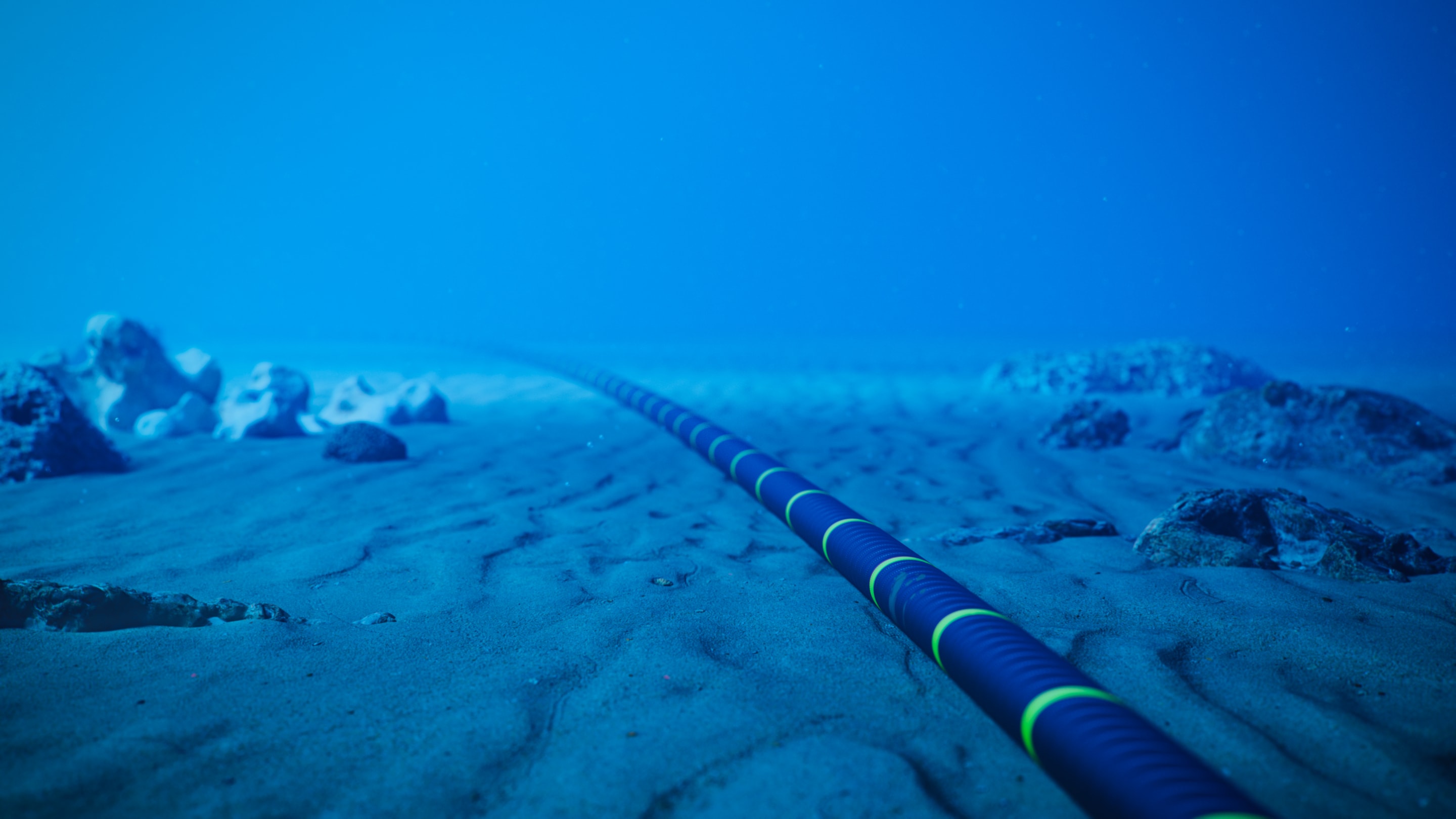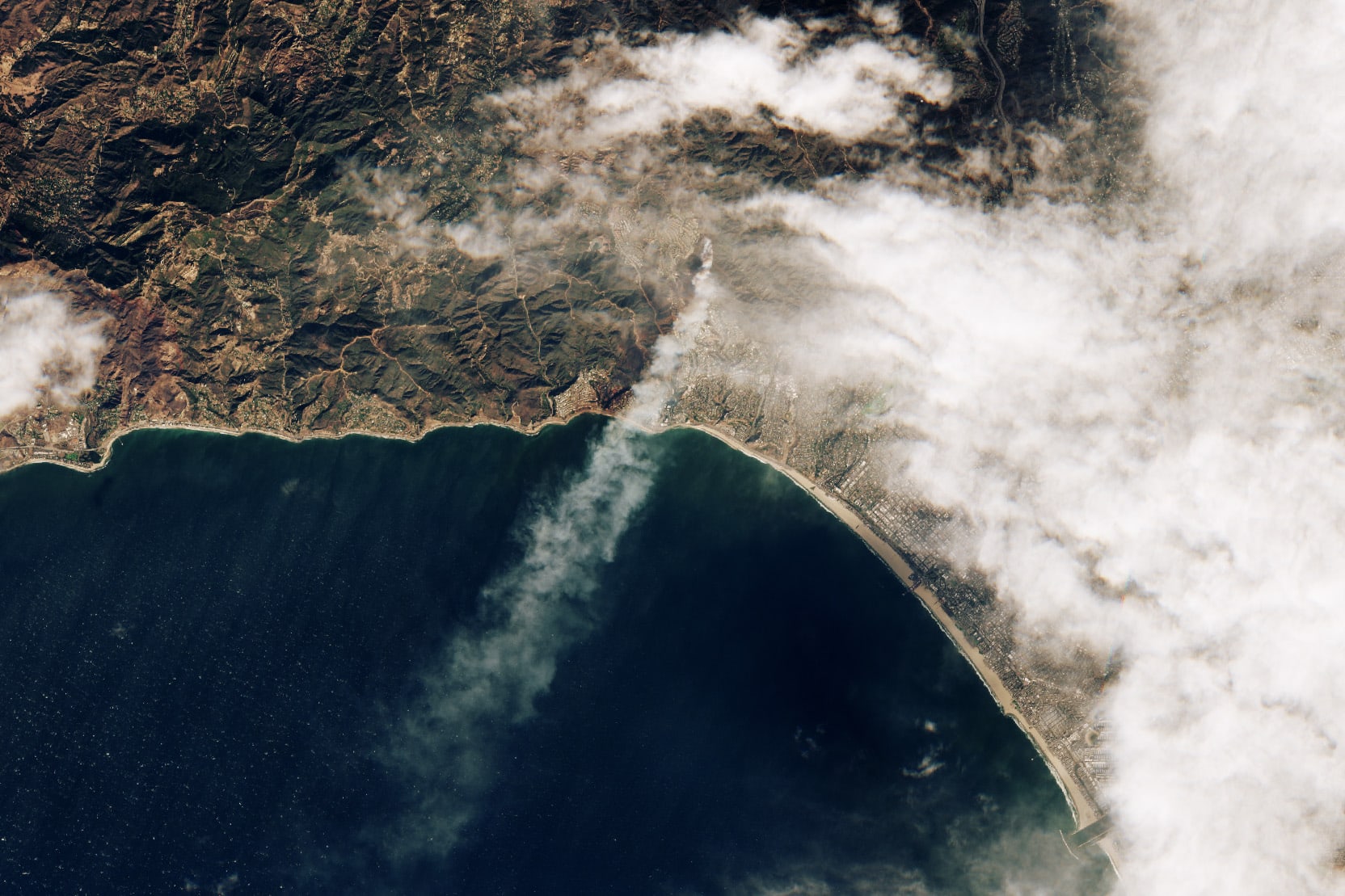Causes.com
| 2.9.23

Do Undersea Cables Impact Marine Life?
Should we remove undersea cables to benefit marine life?
What’s the story?
- Marine scientists are beginning to wonder if undersea cables affect marine life more than previously thought.
- There are tens of thousands of miles of cables on the sea floor, carrying data between continents and renewable power from offshore energy to land masses. These cables generate electromagnetic fields (EMF) that may impact the creatures living in or near the structures, such as anemones, sponges, corals, sea stars, urchins, worms, bivalves, crabs, and more.
- As offshore energy sources grow, the number of cables is increasing. Scientists are concerned about the threats they pose to underwater life and worry we'll face another environmental condition caused by human infrastructure.
What’s dangerous about undersea cables?
- On the ocean floor, there are both telecommunication cables and high-voltage power cables. The former cross the deep seas, while the latter are found closer to the shore.
- There are around 380 telecommunication wires in the oceans, spanning 745,000 miles. They provide information pathways for more than 95% of international data.
- The deep sea cables are surrounded by a few layers of metal for protection and are buried below the seafloor, which impacts the habitat. Bastien Toarmina, a researcher at the Norwegian Institute of Marine Research in Bergen, said this could lead to an imbalance ecosystem.
- Scientists are also concerned about EMF, as it can distort the geomagnetic field that marine life relies on to navigate the oceans. Many believe more research needs to be done to understand the threat entirely. Taormina was the lead author of a study that found that the wire's EMF may impact animals that migrate along the continental shelves, but agrees more studies are needed.
Should the cables be removed?
- Removing the cables could have potential benefits, but would most likely disrupt the ecosystem even more, especially the seafloor creatures that made their homes around the structures.
- These cables don’t pollute and can even be recycled. Nicole Starosielski, an associate professor at New York University who examines the cultural and environmental dimensions of undersea wires, said:
“The carbon footprint is actually relatively low compared to most of the internet’s infrastructure. We’ve actually advocated for more cables, connected large onshore data centers on renewable grids, in order to minimize fossil fuel consumption.”
- Without the cables, small developing islands could not obtain green energy, telecommunications, remote work, e-medicine, etc. For now, scientists are unsure whether the environmental consequences outweigh the social benefits of undersea cables.
What do you think? Should we remove undersea cables to benefit marine life?
-Jamie Epstein
(Photo credit: iStock/imaginima)
The Latest
-
 Changes are almost here!It's almost time for Causes bold new look—and a bigger mission. We’ve reimagined the experience to better connect people with read more...
Changes are almost here!It's almost time for Causes bold new look—and a bigger mission. We’ve reimagined the experience to better connect people with read more... -
 The Long Arc: Taking Action in Times of Change“Change does not roll in on the wheels of inevitability, but comes through continuous struggle.” Martin Luther King Jr. Today in read more... Advocacy
The Long Arc: Taking Action in Times of Change“Change does not roll in on the wheels of inevitability, but comes through continuous struggle.” Martin Luther King Jr. Today in read more... Advocacy -
 Thousands Displaced as Climate Change Fuels Wildfire Catastrophe in Los AngelesIt's been a week of unprecedented destruction in Los Angeles. So far the Palisades, Eaton and other fires have burned 35,000 read more... Environment
Thousands Displaced as Climate Change Fuels Wildfire Catastrophe in Los AngelesIt's been a week of unprecedented destruction in Los Angeles. So far the Palisades, Eaton and other fires have burned 35,000 read more... Environment -
 Puberty, Privacy, and PolicyOn December 11, the Montana Supreme Court temporarily blocked SB99 , a law that sought to ban gender-affirming care for read more... Families
Puberty, Privacy, and PolicyOn December 11, the Montana Supreme Court temporarily blocked SB99 , a law that sought to ban gender-affirming care for read more... Families
 Climate & Consumption
Climate & Consumption
 Health & Hunger
Health & Hunger
 Politics & Policy
Politics & Policy
 Safety & Security
Safety & Security

Regardless of the effects of underwater cables, the removal will further disturb the sea life that has grown on or near the existing cables over the last 150+ years, as well as the need to replace the transmission pathway that carry 95% of international internet, banking, global communication, military and scientific transmission most likely via satellite. If this effort is going to be done it is best handled once the cable life of 20-40 years is reached and replacement is required anyways.
There are 380 underwater telecommunications cables laid on the surface of the seabed covering 745,000 miles around the world. There are also power cables buried in the sediment for protection used for offshore wind and hydrokinetic power plants which are expected to increase due to renewable energy projects.
Bottom dwelling sea life (anemones, sponges, corals, sea stars, urchins, worms, bivalves, crabs , invertebrates, etc have grown on or near undersea cables since the 1st ones were laid in the 1850s. Despite the many existing studies marine biologists feel more are needed to understand the effects that electromagnetic fields (EMF) have on different species behavior and movement, as well the natural selection in the habitant occurring by the physical presence of the cables.
NOAA is authorized to regulate:
(1) whether and how proposed submarine cables may be installed in National Marine Sanctuaries in accordance with international agreements to which we are a party and generally accepted principles of international law
(2) manage coastal areas
(3) impact in endangered or threatened species
https://www.noaa.gov/gc-international-section/submarine-cables-domestic-regulation
https://www.lawfareblog.com/protecting-undersea-cable-system
https://www.csis.org/analysis/invisible-and-vital-undersea-cables-and-transatlantic-security
https://www.bbc.com/future/article/20230201-how-undersea-cables-may-affect-marine-life
My thoughts tend toward better cable technology rather than the hardship and even chaos eliminating cables will cause.
The installation and operation of submarine cables do affect marine organisms and habitats in a variety of ways. Some of these are sediment disturbance, reef effects, thermal emissions and distortion of natural geomagnetic fields.
If you took every cable and pipeline from
the ocean floor you woul cut almost all international telecommunications system off reliance on only satellites. You would cut certain islands off of communications and green energy infrastructure from the ocean to the islands. Fossil fuels would be cut to certain countries and islands.
We could drop the word internet from our dictionaries. It would be the US net, the European net the African net the Asian net etc.
any d as ta would have to go through thousands of satellites to remain an internet.
Communication is on fibers optic but it requires power for the amplifiers along the way, this is the problem.
If removing the cables are going to disturb Sea life more than we already have, then I say leave them where they are. We cannot continue to disturb an entire exosystem, multiple times, and expect it to survive.
Yes of course, but overall is it good or bad. In short time, sunken hulls are quickly inhabited by a myriad of marine life. Cables seem relatively benign compared to the fishing lines suspense throughout the water column, underwater explosion, pollution, ocean dumping, sonic disturbances, vessel strikes, pH and climate change.
Let us hope cables don’t prove nefarious. I do not see technology or consumerism slowing, hence continued pressure on world resources. It would be nice to have some synergistic success.
The cost benefit anlaysis would not be in favor of removing and replacing with other technology. No matter what choice is made, there are environmental implications.
As stated, more research needs to be done.
I see no viable reason to remove them. If anything it 'may' disrupt the ecosystem. Let them lie.
Change the cables so they don't impact wildlife.
better to quit building wind turbines that kill whales
Definitely remove undersea cables as proven they emit EMF waves which effects any living being's health, and life functions.
Cables are necessary, but I am concerned on the effect of us on wildlife.
The Left's desperation and bovine feces have reached a critical level in their attempt to push so-called "Climate Change." Meanwhile, the northeast is seeing an alarming number of whales dying since the push to build offshore wind farms, but you don't hear a peep from these hand-wringing Communists. Just like they don't care about the number of birds (some endangered) being killed on a yearly basis by inland wind farms. They are willing to overlook all manner of death and destruction to further they're unattainable goals.
https://www.usatoday.com/story/news/nation/2023/01/31/whale-deaths-new-jersey-offshore-wind-farm-moratorium/11153356002/
Yes, but only if the alternative is better in tangible ways.
There is no conclusive, independent information to suggest marine life is being negatively impacted and that there is a better way to provide the infrastructure these underwater lines provide
#1 it may be less disruptive, in some cases, to leave them in place and work on alternatives to carry that traffic once they can be removed safely. #2 We, all life, depends upon the sea either directly or indirectly. Where we need to correct our impact we should do so ASAP.
I rarely find myself unsure on an issue. The environmentalist inme says yes get rid of all undersea cables. The pragmatist understands that this technology has been vital to our society. I definitely believe everything possible must be done to minimize the impact of these lines.
The cables are so deep for the most part there is no study there is no reason to remove the cables that provide a valuable service to this great nation of ours!
"Scientists wonder..." Is wondering about the possible effect on sea life enough to disrupt 95% of data transfer worldwide. Without any evidence, I say no.
CAUSES ASKS: "Should we remove undersea cables to benefit marine life?" ME: Maybe, but I can't see it being done without causing tremendous disturbance to not only the sea bed but to the global systems they support. Far more important, IMHO, are eliminating the multiple fishing practices (scraping, bombing, etc.) that seriously and immediately destroy the ocean's habitats, cleaning up the Great Pacific (GPGP) and other "garbage patches", AND implementing and enforcing the national and international laws necessary to preserve us from all of them. FYI: "The GPGP covers an estimated surface area of 1.6 million square kilometers, an area twice the size of Texas or three times the size of France." Think about it, and where it ultimately ends up: in us. And that's just one of the major threats to the ocean..
https://oceanliteracy.unesco.org/threats-to-the-ocean/#:~:text=The%20biggest%20is%20the%20Great,laceration%2C%20infections%20and%20internal%20injuries.
https://theoceancleanup.com/great-pacific-garbage-patch/